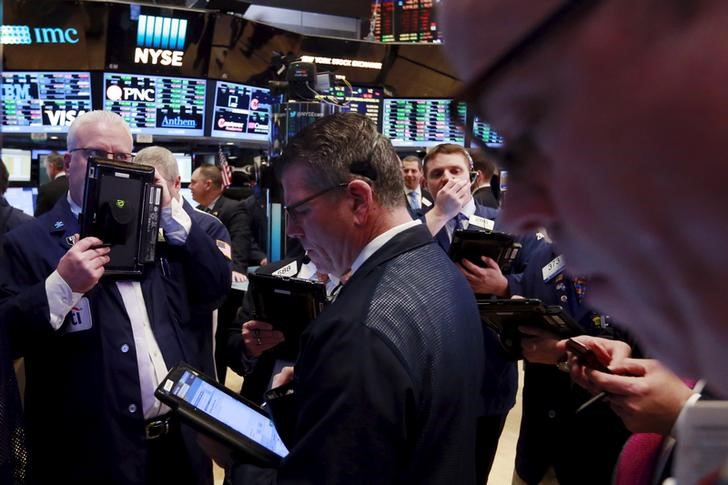By Caroline Valetkevitch
NEW YORK (Reuters) - Spooked by the early 2016 stock market selloff and sick of low interest rates, income investors have been bidding up dividend stocks at a feverish pace - so much so that these shares now are priced at levels high enough to worry some money managers.
An index of utility stocks (DJU) - the poster children of high dividend companies - closed at a record high on Wednesday after the Fed held off on raising rates. A broader group of high-dividend paying stocks, the Dow Jones U.S. Select Dividend Index (DJDVP), is up almost 14 percent after hitting a 14-month bottom in mid-January.
Investors are now paying about $42 for each dollar of dividend they are buying in the Standard & Poor's 500 stock index, while the average since 1935 is roughly $29, according to S&P Dow Jones Indices.
The dividend yield for the Standard & Poor's 500 stock index sits at 2.4 percent - roughly 31 percent below its long-term average.
"People are paying a lot" to get the dividend, said Richard Bernstein, chief executive and chief investment officer of New York-based Richard Bernstein Advisors, which manages $3 billion in assets. "To think it's safe is naive," he said.
Mutual fund managers started selling traditional dividend payers in the utilities and consumer staples sectors in February and early March, according to the most recent survey by Bank of America's Merrill Lynch (N:BAC) .
Bernstein, too, is starting to move his portfolio more towards cyclicals - areas that tend to do better in a growing economy. Dividend investing is less attractive now than it has been in 75 percent of quarters over the last 80 years, he told investors in a note earlier this month.
One risk for high-dividend yielding stocks is that they tend to fall as interest rates rise. Another is that a dividend may not be sustainable for a particular company, as has been the case for some in the energy and materials sectors.
The flight to high yield companies has come, in part, because investors have worried that two straight quarters of declines in S&P 500 earnings - and a third expected in the first quarter of 2016 - were signaling an economic downturn that could hit growth stocks harder than so-called 'safe' stocks like utilities, telecommunications companies and real estate investment trusts.
Better recent economic data has helped to ease some of those worries, and a more cautious approach from the Federal Reserve since it raised interest rates in December for the first time in nearly a decade has bolstered the U.S. stock market and especially utilities.
SOME DIVIDENDS LOOK BETTER THAN OTHERS
Utilities have benefited not only from the flight to safety and the favorable comparison of dividends to low interest rates but also from low fuel and commodities costs. They may be among the most expensive stocks now. The S&P utilities index's (SPLRCU) forward price-to-earnings ratio stands at about 17.6, above the S&P 500's 16.6.
"They are looking expensive whether you look at it on a multiple basis or a yield basis," said Art Hogan, chief market strategist at Wunderlich Securities in New York.
Investors still looking for dividends may find better value in telecommunications and some REITs, particularly office, health care and single-family REITs, he said.
Investors also can focus on companies that recently started paying a dividend or increased their payout, said Michael Sheldon, chief investment officer at Northstar Wealth Partners in West Hartford, Connecticut.

"It's a balancing act for investors," he said.